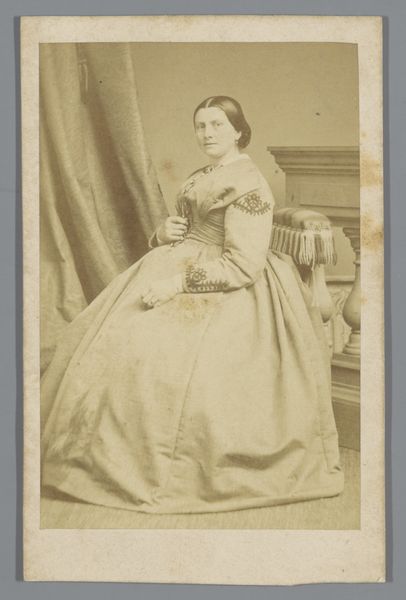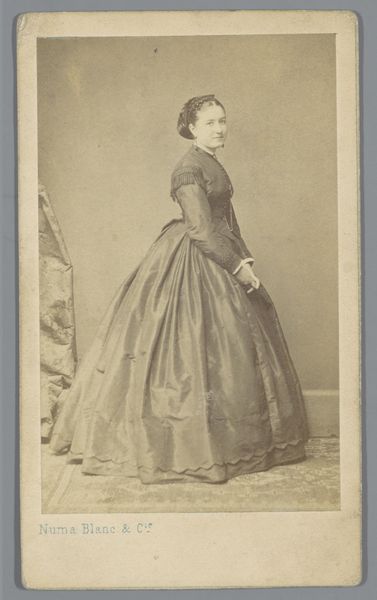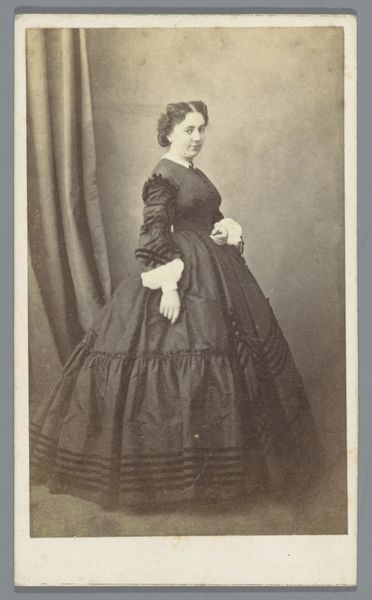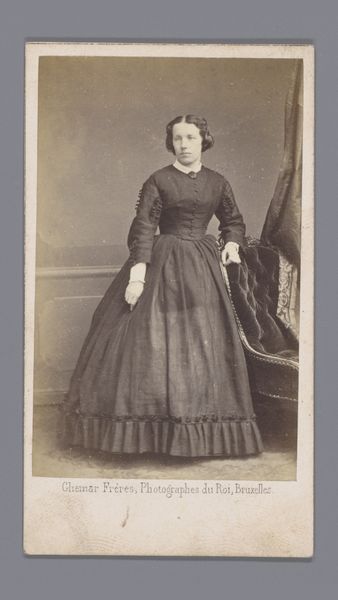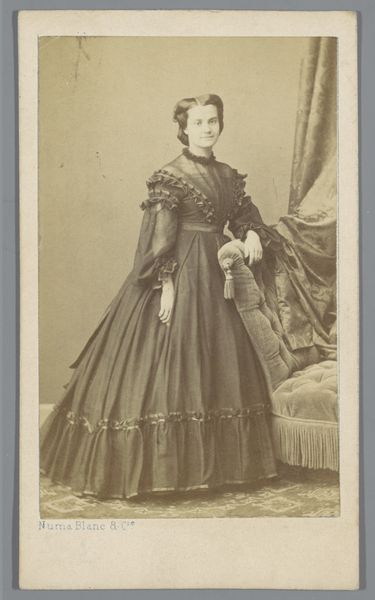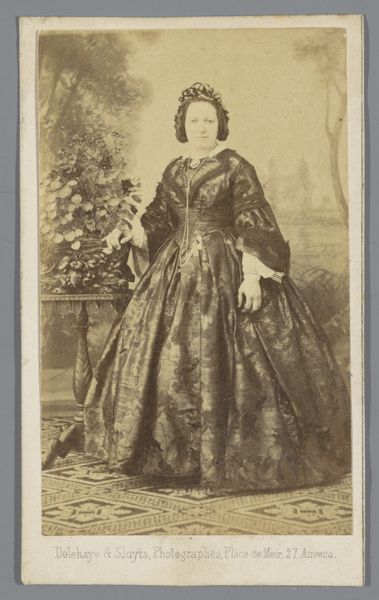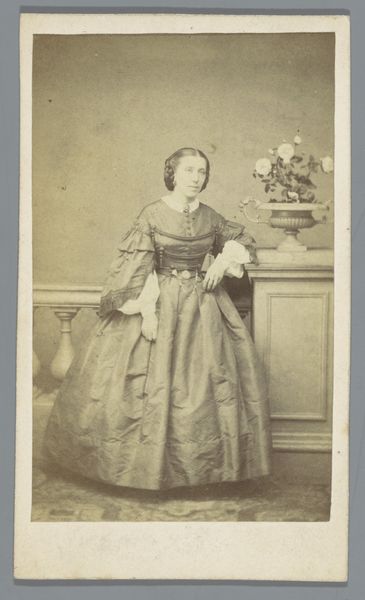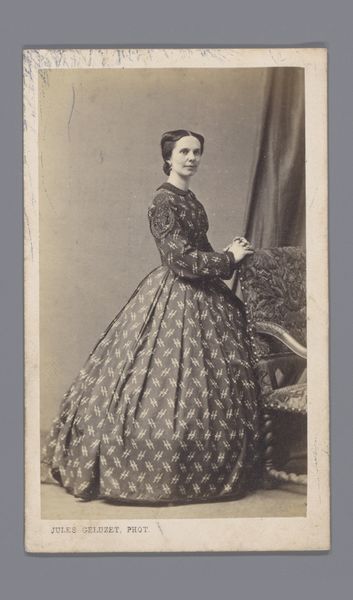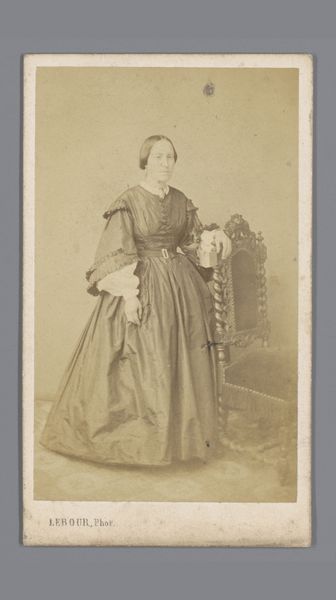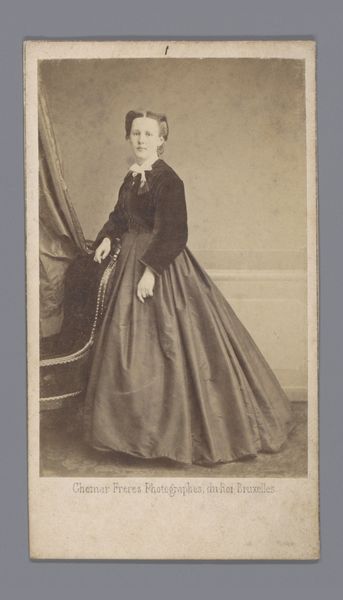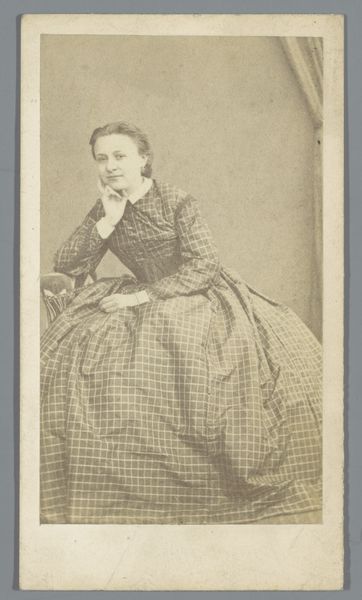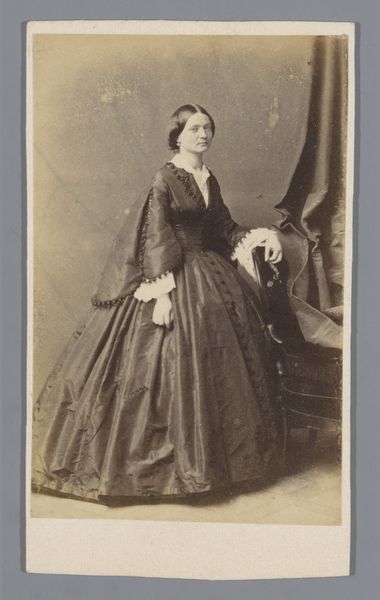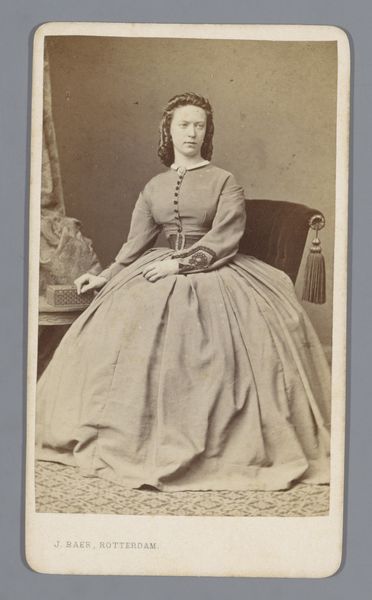
photography
#
portrait
#
photography
#
coloured pencil
#
genre-painting
#
realism
Dimensions: height 105 mm, width 63 mm
Copyright: Rijks Museum: Open Domain
Editor: Here we have "Portret van een onbekende vrouw bij een stoel" ("Portrait of an unknown woman by a chair"), taken sometime between 1859 and 1866 by Gustave Pierre Louis Aimé Margain. It’s a photograph that’s been subtly enhanced with colour, but there’s a certain stillness, a reserve, to the subject’s gaze. How do you interpret this work? Curator: That stillness speaks volumes, doesn’t it? Photography at this time was largely dominated by the bourgeois, the elite. While seemingly a straightforward portrait, consider the sitter's positioning next to the chair. Does it project an image of delicate femininity, or could it hint at the constraints placed on women of this era? Editor: Constraints? In what way? Curator: Think about the dress itself, the fabric and style, which signify a particular social status but also dictated movement and autonomy. Does her expression suggest quiet rebellion against these norms, or is it simply a reflection of the period’s aesthetic ideals? Editor: I never thought about it like that, actually. It’s interesting how an image, which seems so simple on the surface, can speak to broader social themes. Curator: Exactly. This "genre-painting" – is a crucial period to observe the beginnings of photography’s interplay with evolving societal expectations, particularly regarding women's roles. Can photography provide an objective reflection, or is it merely replicating biased and unbalanced dynamics? Editor: It’s fascinating how situating a seemingly simple image within the framework of social and historical power relations unlocks whole new dimensions of meaning. I’ll never see these portraits the same way again. Curator: And that’s precisely why art history is such a compelling and fundamentally valuable form of research. It's not just about looking; it’s about seeing.
Comments
No comments
Be the first to comment and join the conversation on the ultimate creative platform.
